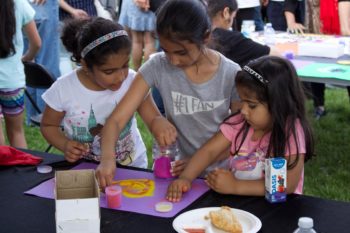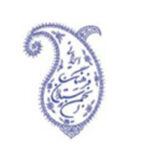Springdale neighbourhood global conference in Brampton, Ont.: “It has brought me hope”
Three months prior to the conference, the neighbourhood team started to think systematically about how to engage more families in the community-building process. Home visits during the March institute campaign focused on conversations with the families of the youth, and two community gatherings were held in March and April, which engaged some 50 individuals in each.
In keeping with South Asian tradition and to help convey the importance of the event, a formal invitation was created along with a deepening theme around the first theme of the conference. Friends visited families in their homes to study the theme and present them with the invitation. A total of 95 households were visited over a three-week period. The team has always been conscious of nurturing the capacity among youth to invite their friends. However, they were particularly conscious in nurturing this capacity amongst entire families. As soon as there was an understanding of this first theme, the question of how the conversation could be extended to include others was explored. Additional invitations and copies of the theme were left in the home to assist them to invite others. Many families had conversations with others, which assisted three new families to be involved in the core activities even prior to the conferences. One family decided to host a community gathering in their local park to allow for easier accessibility for their friends and neighbours and then invited them to the conferences from this event. Through families engaging their networks, 34 adults registered for the conference, with 17 of them attending.
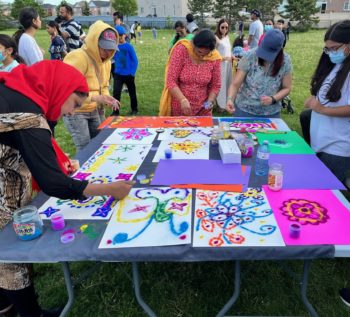 Participants at the ‘mela’ create rangoli, a traditional Indian art form.
Participants at the ‘mela’ create rangoli, a traditional Indian art form.
In preparation for the conference, the team of facilitators gathered and reflected on Book 2, Unit 3, Section 4, and the conference themes which assisted in developing an understanding of the global endeavour the Bahá’í world has embarked on through these conferences, and consulting on the spiritual forces released during the November gathering commemorating ‘Abdu’l-Bahá’s Ascension. Questions such as, “What does it mean to “strain every nerve”? “How can we be confident and courageous in our conversations with new friends?”, “How do we help everyone coming feel the same love ‘Abdu’l-Bahá showed others?” and “How are our individual efforts connected to the collective?” were raised during this gathering. The friends present left joyful and excited to see how the conference could be dedicated to ‘Abdu’l-Bahá.
To allow the widest cross section of friends to participate, the conference was spread over three days. During the first weekend, tents went up to host a ‘mela,’ a common tradition in the neighbourhood among South Asians which translates to community festival. It was held in the neighbourhood park where the first activity began 10 years ago. The purpose of the mela was to extend the first theme of Bahá’u’lláh’s vision for humanity to the population – including veteran families as well as newly-acquainted friends – introduce families to the core activities offered and continue to register friends for the conference the following weekend.
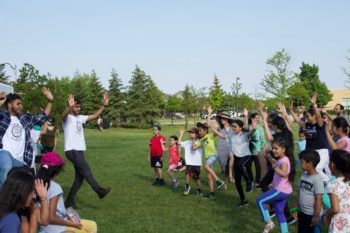 Participants learn a bhangra dance at the ‘mela,’ which translates to community festival.
Participants learn a bhangra dance at the ‘mela,’ which translates to community festival.
Knowing that the community had a vision of what a mela has looked like historically, the team made an effort to consult with families on home visits about the types of activities that reflected the cultures present in the neighbourhood. One mother shared how, “Melas are not just for the children and young people. There should be activities that include the adults and grandparents because they are part of the community too. They should enjoy themselves too!” Rangoli, a traditional Indian art form, was included as one of the activities that parents engaged in to reflect on the vibrancy of the community. Similarly, music, food, song, art, fellowship, dance, even collective activities like musical chairs were included in the mela, all animated by the capacities raised from the training institute. Teams of youth carried out elevated conversation around this first theme in the park, while programs and activities for children and junior youth were being offered. Each day concluded with presentations prepared by children, junior youth, youth and a few brave adults to share the unfoldment of the community-building process over the past 10 years. Families in attendance went home with a pamphlet created in both English and Punjabi which highlighted the neighbourhood activities, as well as a calendar of the activities planned for the summer.
At the mela, families reflected on how the work of building a better world will require the contributions of everyone. A mother who was reflecting with her daughter shared, “When my daughter talks about what she is doing for the community, I always think it is good. But I didn’t really think I could do things like that. When we kept talking more today about how helping the community needs many people working together, using their talents and doing what they can, I saw a bit more how I can do it. One of the youth showed me how my cooking, or making cha for the people in the camp is the way I am also contributing. And I love cooking! It’s more about how we all work together in whatever way we can.”
The joyful conversations were illuminated by reflecting on the Bahá’í principle of oneness, that we are all the fruits of one tree, the leaves of one branch, the flowers of one garden. To help the community recognize the beauty and vibrancy of everyone’s contributions, the parents came together and created diverse flowers with the rangoli. As the flowers were being made, conversations around the progress of children and efforts to support youth filled the air. A mother who had been standing on the sidelines watching was so attracted by the art being created that she slowly made her way over to the table and contributed to the collective pieces as well.
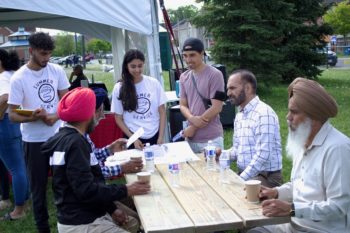
At the mela, families reflected on how the work of building a better world will require the contributions of everyone.
As the team reflected on the first day of the conference and prepared for the following weekend, many people shared how the rangoli gave the parents a creative medium to advance their understanding around the community-building efforts and foster friendships as they worked together. One of the mothers who was present at the mela and expressed a lot of excitement was approached to create a design that could be used to guide the rangoli in the following days. “The most beautiful rangoli is made very big and everyone helps to make it together,” she shared. She sat with her family and the visiting tutor to think about the concepts that would be presented at the conference and how the pattern could reflect the same spirit.
A conference was held the following Saturday to allow for a more in-depth exploration of the conference themes of Building a Vibrant Community and the Centrality of Education. The plenary sessions included presentations from core activity participants on topics related to the themes, which served to frame the small group discussions and activities that followed. During one plenary session, while a group of youth were presenting, a child turned to her children’s class teacher and said, “I know what I want to be when I grow up. I want to be a community leader just like them.” Another mother shared, “My family and I have lived in this neighbourhood for not too long and we have been hoping to connect to others for some time. Seeing all these families coming together and talking to one another and seeing our kids being taken care of by young people made me so happy. It has brought me hope.”
There were three adult groups of about 15 to 20 people each, two of which spoke English and one of which spoke Punjabi and one small group of about five seniors. When reflecting on how the conversation advanced, one facilitator noted how her group gave a lot of attention to reflecting on the twofold moral purpose and the aspirations of their children. “We thought about the example of pursuing a higher education. I saw how the parents were beginning to articulate how education was not just something for their child’s individual progress, but also contributes to advancing society.” With each conversation, the facilitators saw how families advanced in their understanding of how we could contribute to building a materially and spiritually prosperous community. The children, junior youth and youth groups reflected these same sentiments as they eagerly ended the evening sharing the artistic reflections they created throughout the day.
The conferences gave the team a glimpse of the following line from the 30 December 2021 message of the Universal House of Justice: “Within each centre of intense activity, collaborative arrangements emerge among groups of families, who organize community-building activities among themselves with a view to widening the embrace of such activities to many nearby households.” Since the conference, the families have been arranged in 12 groupings with one or two youth tutors associated with each. The tutors will consult with the families in determining the next step for each. Collectively, there are hopes to host four more community gatherings in the park as well as two half-day family conferences over the summer months.
Category: Conferences in Canada, Highlights, Uncategorized
